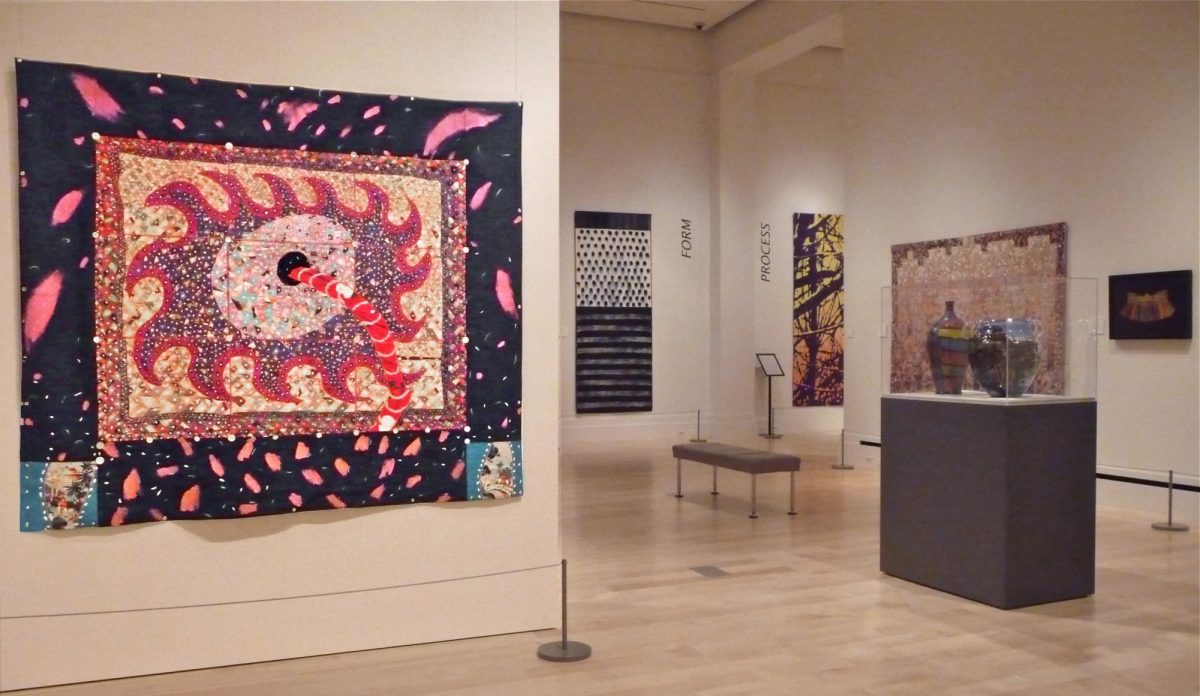
Wikimedia Commons
The Textile Museum’s “Source Material” exhibition highlights fashion’s role in pollution while showcasing more responsible practices.
If we want to save the world, we are going to have to do it in style.
One easily grasps that idea by visiting “Source Material: Lessons in Sustainable Fashion,” an exhibit at the Textile Museum exploring the various threads of sustainable fashion from past to present. As the fashion industry contributes to global pollution and greenhouse gas emissions, “Source Material” showcases more responsible ways to engage with fashion and the environment. A survey of the Textile Museum’s collection reveals that the exhibit shows high-quality textiles from various periods ranging from the 19th century to today, featuring garments and fabrics from across the world created using environmentally friendly practices. Although many modern, technologically innovative clothes stand out, the real highlight of the collection is its older, more traditional pieces — from a Tibetan coat made from chair cushions to curtains produced by the English artist William Morris, who was an early critic of the Industrial Revolution’s effects on the environment and founder of the Arts and Crafts movement.
“Source Material” begins with an overview of traditional plant-based fabrics with small environmental impacts. While noting well-known examples like flax and hemp, the exhibit also recognizes fibers like date palm and cedar bark. Pineapple silk, a beautiful fabric produced in the Philippines, is one of the most intriguing textiles, appearing in a lovely, intricately stitched blouse with “floral embroidery.”
Recently developed “biofabrics” also catch viewers’ eyes. One of my favorite pieces on display, “After Ancient Sunlight,” designed by Charlotte McCurdy, is a transparent jacket with a chic cut made out of fibers derived from algae. Because algae capture and store carbon dioxide from the atmosphere, the garment is carbon-negative — its production reduces the level of carbon dioxide in the air.
A pair of black pants made out of shiny, rippling material could easily be mistaken for leather. Instead, it and the pink purse next to it are made from processed crustacean shells. Nearby, an everyday outfit on display by the Indian company Something Sustainable is dyed with marigolds, which are often used as religious offerings and then disposed of in rivers, reducing harm to the environment.
The sheer inventiveness and technological dazzle of these pieces is astounding. If we can produce sustainable products with this level of sophistication and mass-market feel, can we not continue our ravenous consumption of resources and clothes?
To answer that question, the exhibit moves back in time. Through a nineteenth-century Japanese farmer’s wife’s coat, the exhibit explores the scarcity of resources that fueled sustainable innovation, highlighting the importance of material reuse in fashion. Because the farmer’s wife could not afford a coat, she made a new one for herself from strips of old clothing that she skilfully sewed together, invoking the concept of mottainai, which the exhibit describes as “a blend of humility, respect and gratitude paired with a profound regret at the thought of wasted resources.”
In West Bengal, India, nineteenth-century women similarly reused old clothes to create a beautiful embroidered quilt, called kantha, replete with colorful geometric motifs and representations of fish, elephants and people.
Many modern designers choose to incorporate these traditional techniques in their work: the British-Iraqi artist Walid Al Damirji, for example, makes clothing from the remnants of vintage textiles, evoking the farmer’s wife. His Georgina coat, a patchwork of fabrics that, though contrasting, complement each other and please the eye, is stylish and understated.
And Petit Pli, a British brand inspired by origami, creates “collapsible and expandable” clothes for children; as the child wearing an outfit grows, the outfit grows with them. It is a moving idea: fashion that evolves with its wearer, clothes to wear for the environment and for life.